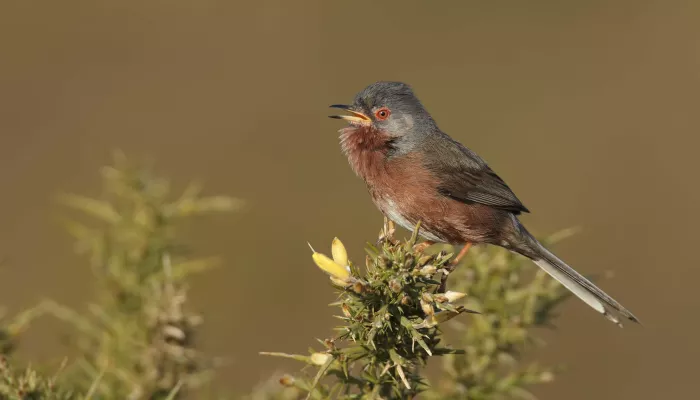| Statistics | |
|---|---|
| Length: | 12cm |
| Wingspan: | 16cm |
| Weight: | 10g |
| Average Lifespan: | Up to 5 years |
The small, brown Dartford warbler is most easily spotted when warbling its scratchy song from the top of a gorse stem. It lives on lowland heathland in the south of England, where it nests on the ground.
About
The Dartford warbler is dependent on mature, dry heath habitats in the UK, and particularly on gorse that is in good condition for surviving cold, harsh winters. It only eats insects and does not migrate for the winter, which means it is vulnerable to cold weather and prolonged snow cover. It is a ground-nesting bird, preferring to breed under the protective cover of dense heather or compact gorse. It makes a grassy, cup-shaped nest, in which it lays three to five eggs. It can have up to three broods from April to July.
How to identify
The Dartford warbler is a small, dark brown bird, with a long tail, a distinctive red eye-ring and a cherry-red breast. It is most often spotted warbling its rattly and scratchy song from the top of a gorse stem. At other times, its muted tones allows it to blend in with the woody heather and gorse.
Did you know?
When the UK's breeding population of Dartford warblers crashed in the 1960s, only 10 pairs remained. Today, there are about 3,200 pairs nesting on our lowland heaths.

